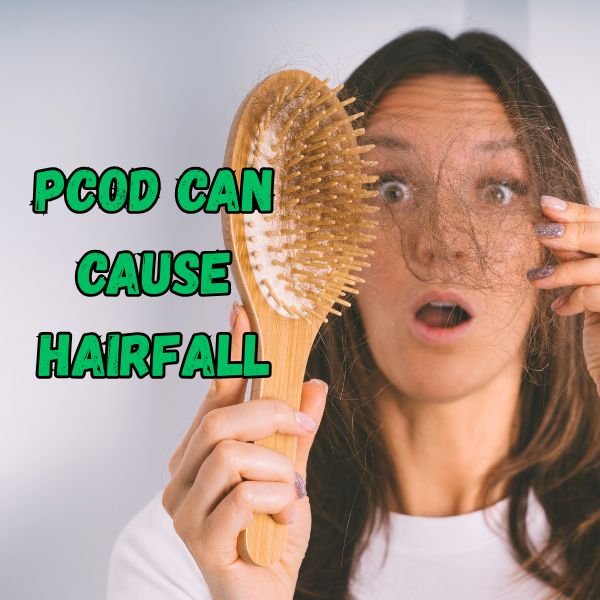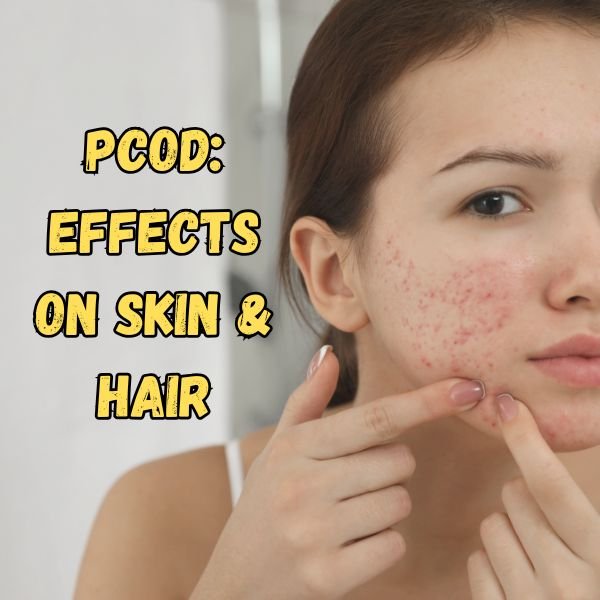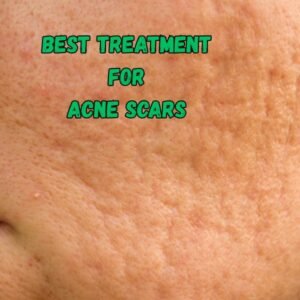Polycystic Ovary Syndrome (PCOS) is a common health condition that affects many women during their childbearing years. You may already know its impact on menstrual changes or fertility, but the way it affects your skin and hair can be confusing and hard to manage. In this blog, we’ll explain three key issues: acne, hair fall, and pigmentation-why they happen with PCOS, and what you can do about them.
What Is PCOS?
PCOS is a hormonal imbalance that affects how your ovaries work. Some common signs include irregular or missed periods, weight gain, and small cysts on your ovaries—though not everyone with PCOS will have cysts.
PCOS often causes two main problems:
- High androgen levels — androgens are male-type hormones (like testosterone) that can rise in PCOS and cause skin and hair changes.
- Insulin resistance — when your body doesn’t use insulin well. This can increase androgens further and lead to issues like skin pigmentation.
Acne: Why It Happens and What You Can Do
Rising androgen levels make your skin’s oil glands produce more sebum (oil), which clogs pores and leads to acne. These pimples often appear on the face, neck, chest, or back and may not respond well to regular over-the-counter acne treatments.
What you can do
- Hormonal birth control pills can lower androgen levels and help reduce oil and acne.
- Anti-androgen medications such as spironolactone can block androgens and improve acne but must be used under medical supervision.
- Prescription retinoids (like topical retinoid creams or gels) may help after discussing with a dermatologist. Be careful: they make skin more sensitive to the sun, so use sunscreen.
- Lifestyle: Managing diet and inflammation and maintaining skin hygiene may help support clearer skin over time, though evidence is mixed.

Hair Fall (Hair Thinning): Causes and Care
Too much androgen is converted into DHT (dihydrotestosterone) in the scalp, which harms hair follicles and causes thinning or male-pattern hair loss, even in women with PCOS.
Hope for improvement
- This type of hair loss, called androgenetic alopecia, isn’t permanent or scarring, which means regrowth is possible.
- Treatments may include medications to balance hormones, gentle hair care (avoiding tight hairstyles or harsh heat), and a healthy diet rich in proteins and iron.
- Some medications like finasteride can help hair loss, though their use needs careful guidance.
Pigmentation: Dark Patches on Your Skin
With insulin resistance, skin can develop dark, thick, velvety patches—especially in folds like the neck, armpits, groin, or under breasts. This is a condition called acanthosis nigricans.
Another issue is skin tags, small bits of extra skin that often appear around the neck or armpits.
Managing pigmentation
- Treating insulin resistance—through lifestyle changes like diet and exercise, and sometimes medications like metformin—can help reduce these skin changes.
- Using gentle skincare, avoiding friction (tight clothes), and seeing a dermatologist for targeted treatments (e.g., creams or minor procedures) may help lighten or remove patches or tags when needed.
Why These Issues Matter Emotionally Too
Dealing with acne, thinning hair, or skin patches can be emotionally tough. These visible symptoms often cause stress, anxiety, or lowered self-esteem. Understanding PCOS and seeking help from doctors or support groups can make a major difference in how you feel—inside and out.
What You Can Do: A Simple Action Plan
| Step | Action |
|---|---|
| 1. Talk to a healthcare provider | Get checked for PCOS through physical exams, blood tests, and possibly an ultrasound. |
| 2. Work on lifestyle habits | A healthy diet, regular exercise, and managing insulin resistance ease symptoms. |
| 3. Target skin and hair issues | Use hormonal treatments for acne, gentle care for hair, and skin-focused remedies for pigment. |
| 4. Seek specialist support | Dermatologists and endocrinologists can help personalize treatment. |
| 5. Stay patient and consistent | PCOS treatments take time; sticking with them yields better results. |





